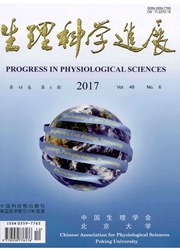

 中文摘要:
中文摘要:
机体肠道与肝脏间的交互作用形成肠-肝轴,后者的紊乱是肝脏疾病发生的重要原因,而良好的肠道稳态和肝脏的保护对维持机体内环境的稳定起着重要作用。胆汁酸(胆盐)作为肠-肝轴循环中的重要组成成分,不仅参与了机体营养物质的消化代谢,还作为一种信号分子和代谢调节因子,能够激活核受体和G蛋白偶联受体(GPCR)信号通路参与调节肝脏脂质、葡萄糖和能量平衡,维持机体代谢平衡。本文将结合近年来有关胆汁酸的研究进展,从胆汁酸的来源、在肠-肝轴中的循环以及胆汁酸在机体中的作用等方面进行综述,以加深对肠-肝轴重要性的理解。
 英文摘要:
英文摘要:
The interaction between gut and liver in host is forming gut-liver axis. The impairment of gut- liver axis is involved in the pathogenesis of liver diseases, as stable gut condition and liver protective function play an important role in maintaining internal environment homeostasis. Bile acid (bile salt) as an important substance in the enterohepatic circulation, not only can exert functions in the digestion and metabolism of nutrients, but also can be signaling molecules and metabolic regulators to activate nuclear receptors and G protein-coupled receptor (GPCR) signalings, thus regulating hepatic lipid, glucose, and energy balance and maintaining host metabolic homeostasis. This article will review the latest researches, from the source of bile acids, circulation in the gut-liver axis and the role of bile acids in the body, ai-ming to deepen our understanding of the importance of gut-liver axis.
 同期刊论文项目
同期刊论文项目
 同项目期刊论文
同项目期刊论文
 期刊信息
期刊信息
